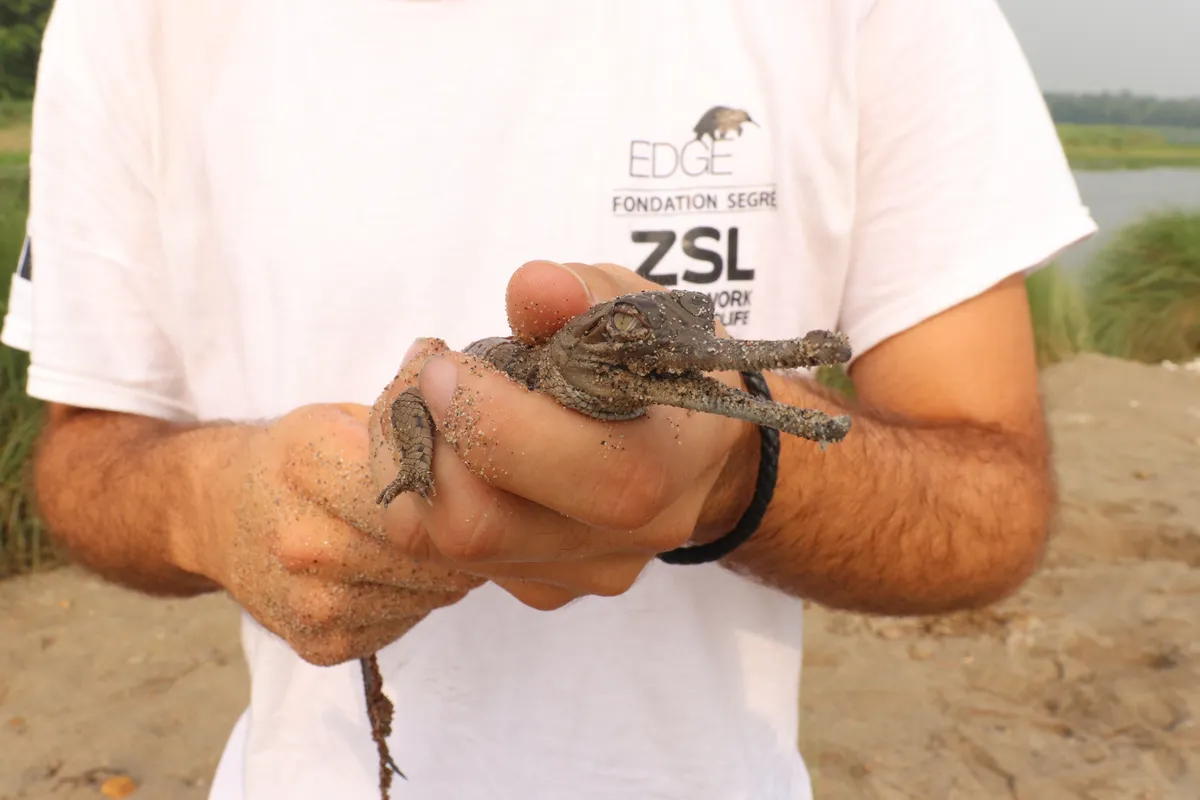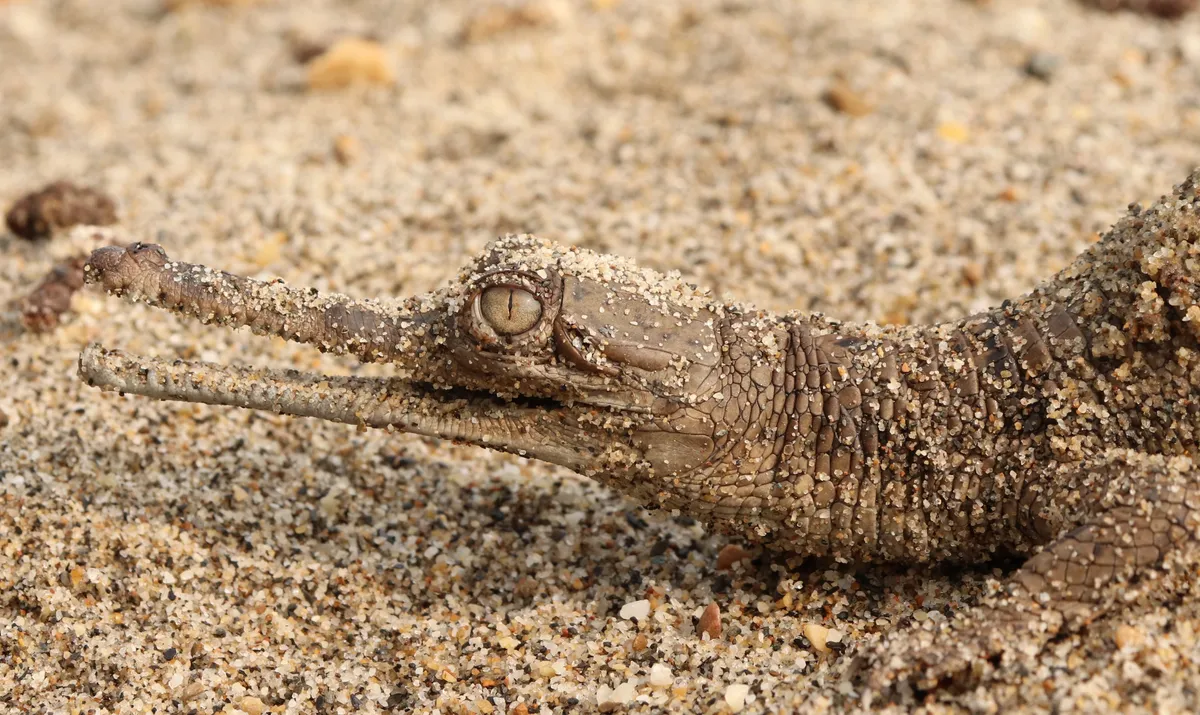Conservationists working in Bardia National Park, Nepal, were thrilled to discover over 100 hatchlings of the Critically Endangered gharial crocodile, Gavialis gangeticus. The finding marks the first recorded breeding of gharials in the park since 1982 and is a huge step towards increasing their numbers in the wild.
“After trekking through the jungle for hours to sit on a ridge and finally catch a glimpse of the hatchlings below us – it was an incredible moment to capture,” says Ashish Bashyal, conservation project lead and EDGE (Evolutionary Distinct and Globally Endangered) of Existence Fellow.
“At around 30cm in size, they look exactly like miniature versions of adult gharials – so incredibly cute.”

Whilst the discovery is exciting, experts warn that funding and conservation actions are still urgently needed.
Direct and indirect human alterations to gharial river habitats have decimated their numbers in the wild. Since the 1940s, the species has declined by 98% due to the construction of dams and irrigation canals, agriculture, and pollution to waterways.
Fewer than 100 adult gharials remain in Nepal, with severely fragmented populations in India, and virtual extinction from their remaining historic range.
As such, gharials are classed as one of the world’s most endangered reptiles, ranking at number 17 on the Zoological Society of London’s (ZSL) EDGE of Existence programme reptiles list.
The discovery of a breeding site in Bardia National Park enables conservationists to prioritise limited resources to conserving the population, at a time when conservation action is most needed.
“Understanding whether gharials were breeding in Bardia National Park was considered to be a top priority for the species, as upcoming plans to divert nearby river systems –which would likely have an impact on the habitat and quality of the river for gharial, are currently underway,” explains Rikki Gumbs, ZSL EDGE of Existence PhD researcher.
“Given the species is limited to around five populations across its entire range, this is such a positive discovery, and a critical step for the long-term recovery of the species in Nepal.”

There is only one other recorded breeding population of gharials in Nepal, in Chitwan National Park. Local communities on the edges of national parks often face conflict with animals over resources.
ZSL work with local communities, including those around Chitwan National Park, to support alternative, sustainable livelihoods that also protect the wildlife they live alongside.
Main image: A gharial hatchling swims in the Babai river at Dhanuse in the Bardia National Park, Nepal. © Ashish Bashyal
